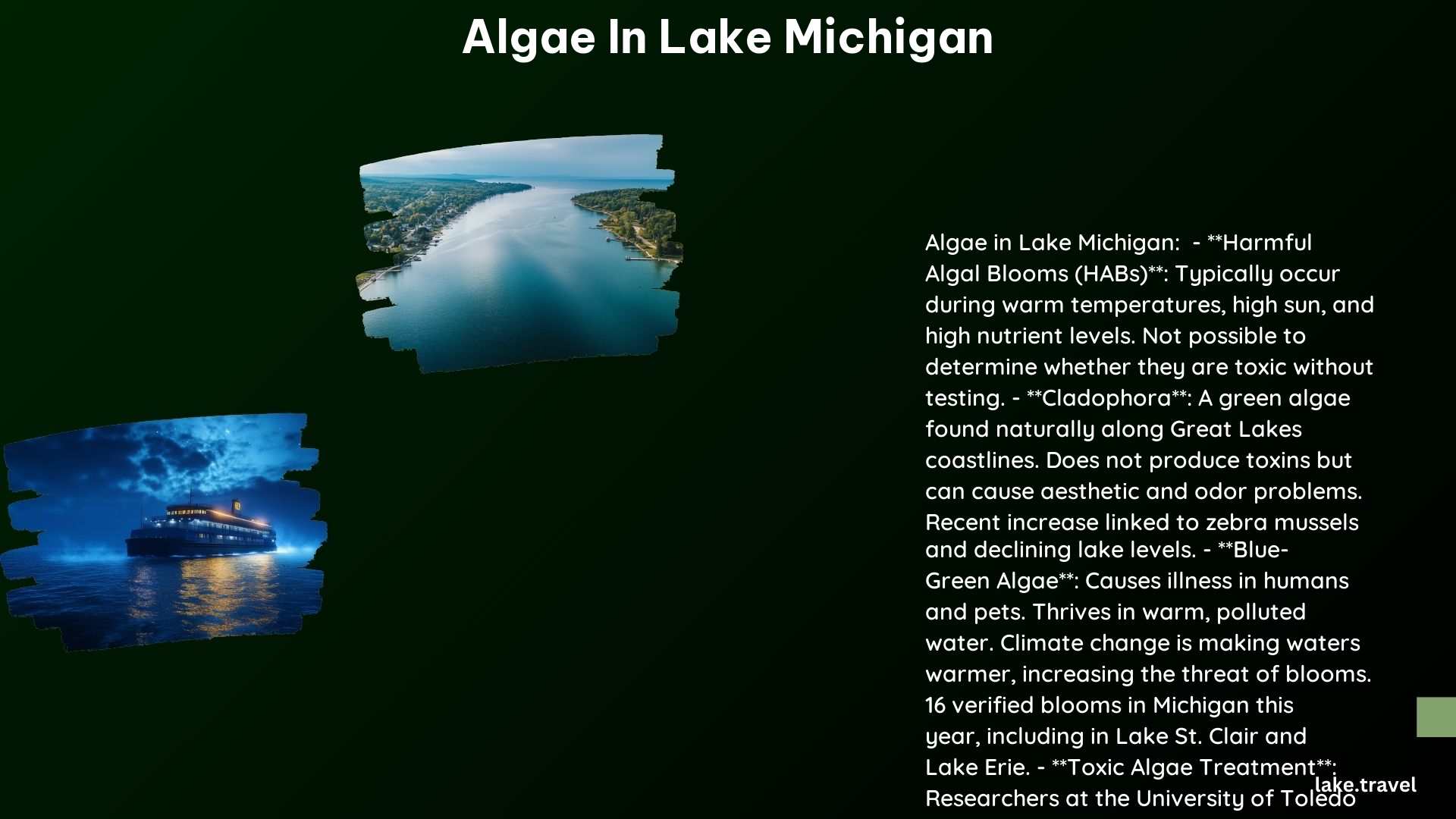Algae in Lake Michigan is a significant environmental concern, particularly with regards to blue-green algae and Cladophora. These types of algae can have detrimental effects on the lake’s ecosystem, as well as pose health risks to humans and animals. In this blog post, we’ll dive deeper into the causes, effects, and management strategies for these problematic algae in Lake Michigan.
Blue-Green Algae in Lake Michigan

Causes and Effects
Blue-green algae, also known as cyanobacteria, thrive in warm, polluted water and can produce harmful toxins called cyanotoxins. These toxins can be harmful to the liver and kidneys, and can cause illness in humans and animals if ingested, touched, or inhaled.
Health Risks
Exposure to blue-green algae can lead to a range of symptoms, including rashes, respiratory problems, and liver and kidney damage. In severe cases, it can even be fatal to pets and humans.
Prevention and Treatment
Scientists are working on developing a preventative treatment using a naturally occurring bacteria found in Lake Erie that can detoxify the algal toxin. However, this treatment is still in the experimental stage and not yet available for human use.
Cladophora in Lake Michigan

Characteristics
Cladophora is a green algae that grows on submerged rocks, logs, or other hard surfaces. Unlike blue-green algae, Cladophora does not produce toxins, but it can cause aesthetic and odor problems when it decays on beaches.
Growth Factors
Cladophora growth is linked to nutrient sources like phosphorus and nitrogen, as well as the presence of zebra mussels. Declining lake levels also contribute to its growth.
Impact
While Cladophora itself does not pose a direct health risk, its decay can promote bacterial growth, which can be harmful to humans. Additionally, it can attract large flocks of gulls, leading to high concentrations of fecal material and bacteria.
Management and Prevention
Reducing Phosphorus
Efforts to reduce phosphorus levels in Lake Michigan are crucial in controlling Cladophora growth. This can be achieved by reducing pollution from lawn fertilizers, agricultural runoff, and urban runoff.
Zebra Mussel Control
Controlling zebra mussel populations is also important, as they increase the availability of phosphorus for Cladophora growth.
Monitoring and Reporting
The public can report suspicious-looking algae to the Michigan Department of Environment, Great Lakes and Energy, and check the National Center for Coastal Ocean Science (NCCOS) website or the Michigan Department of Environment, Great Lakes and Energy’s algae bloom map for the latest bloom reports.
Current Situation
Bloom Forecast
The National Center for Coastal Ocean Science (NCCOS) forecasts a moderate blue-green algae bloom in Lake Erie for the current year, which could potentially impact Lake Michigan as well.
Recent Blooms
Harmful algae blooms have been reported in various Michigan lakes, including Muskegon Lake, which has spilled into Lake Michigan.
In conclusion, the presence of blue-green algae and Cladophora in Lake Michigan is a significant environmental concern that requires ongoing monitoring, management, and public awareness. By understanding the causes, effects, and prevention strategies, we can work towards protecting the health and beauty of this vital Great Lake.
References:
- https://www.bridgemi.com/michigan-environment-watch/how-protect-pets-during-michigans-blue-green-algae-season
- https://dnr.wisconsin.gov/topic/GreatLakes/Cladophora.html
- https://www.bridgemi.com/michigan-environment-watch/toxic-great-lakes-algae-makes-michigan-sick-remedy-may-be-near
- https://www.mlive.com/environment/2024/08/yuk-muskegon-lake-harmful-algae-bloom-spills-into-lake-michigan.html
